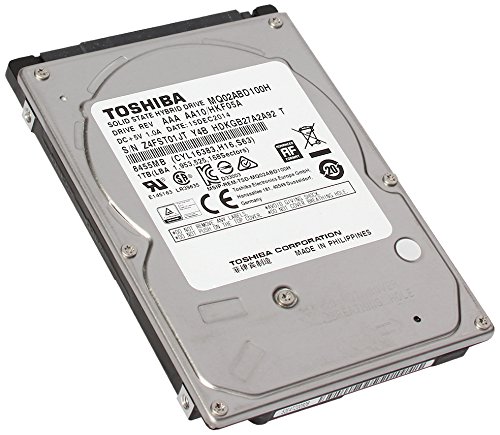Introduction:
In the dynamic world of technology, where information flows rapidly, misconceptions and myths often surround various aspects of our devices. When it comes to laptop hard disk, these myths can shape decisions about storage preferences and usage habits. In this exploration, we will delve into prevalent misconceptions surrounding laptop hard disks and shed light on the truths that lie beneath the surface. By debunking these common myths, we aim to empower users with accurate knowledge, enabling them to make informed choices for optimal laptop performance and longevity. Welcome to the realm of “Laptop Hard Disk Myths: Debunking Common Misconceptions.” Let’s unravel the truths and dispel the fictions that swirls around these essential components of our digital lives.
Laptop Hard Disk Myths: Debunking Common Misconceptions
More Gigabytes (GB) or Terabytes (TB) mean better performance:
Explanation: The storage capacity of a hard disk is primarily about how much data it can hold. While having ample storage space is crucial, it doesn’t directly impact the speed or performance of the hard disk. The performance is more influenced by factors like disk speed (RPM for HDDs), cache size, and whether it’s an HDD or SSD.
Solid State Drives (SSDs) are not as reliable as Hard Disk Drives (HDDs):
Explanation: SSDs are generally more reliable than HDDs because they lack moving parts. HDDs have spinning disks and mechanical arms, making them more susceptible to physical wear and tear. SSDs, being electronic, are less prone to mechanical failures. However, it’s essential to note that both SSDs and HDDs can fail for various reasons unrelated to their basic design.
Fragmentation significantly affects SSD performance:
Explanation: Fragmentation occurs when files are split into pieces scattered across the disk, making it slower for HDDs to retrieve them. SSDs, however, do not rely on physical read/write heads, so they can access fragmented data almost as quickly as contiguous data. While fragmentation is less of a concern for SSDs, regular maintenance tasks like TRIM commands (for garbage collection) can help maintain optimal performance.
Disk Cleanup Software Improves Performance:
Explanation: Traditional disk cleanup tools that were designed for HDDs may not be necessary for SSDs. Constant unnecessary writes to an SSD, as performed by some cleanup tools, can contribute to the wearing out of the drive. Modern operating systems usually have built-in tools that manage storage effectively, and unnecessary third-party tools might do more harm than good.
You should always go for the highest RPM in HDDs for better performance:
Explanation: RPM (Revolutions Per Minute) is a measure of how fast the disks inside an HDD spin. While higher RPM can improve data transfer rates, it also increases power consumption and heat generation. The impact of RPM on overall system performance is often overshadowed by other factors, such as the presence of an SSD, which can significantly boost system responsiveness.
SSDs are immune to physical damage:
Explanation: While SSDs are more robust than HDDs in terms of resistance to physical shocks, they are not entirely immune to physical damage. Extreme conditions such as high temperatures, electrical surges, or physical impact can still affect the reliability of an SSD. Users should take standard precautions to protect their laptops from physical harm.
It’s safe to abruptly power off a laptop without shutting it down:
Explanation: Abruptly powering off a laptop, especially during write operations, can lead to data corruption or loss. This is true for both HDDs and SSDs. When you shut down or restart your laptop, the operating system ensures that all data is saved properly, and the system is in a stable state for shutdown.
External HDDs are always slower than internal ones:
Explanation: The speed of an external HDD depends on factors like the connection interface (USB 2.0, USB 3.0, Thunderbolt) and the rotational speed of the drive. While external HDDs might have slower data transfer rates compared to internal ones, advancements in interface technologies like USB 3.0 and Thunderbolt have significantly improved the performance of external drives. In some cases, external HDDs with fast interfaces can perform comparably to internal ones for certain tasks.
By understanding these nuances, users can make more informed decisions about their laptop storage choices and adopt practices that optimize the performance and lifespan of their hard disks, whether they are HDDs or SSDs.
Conclusion:
Navigating the landscape of laptop hard disk myths has allowed us to peel back the layers of misinformation and reveal the core truths that underpin these critical storage components. In concluding our exploration of “Laptop Hard Disk Myths: Debunking Common Misconceptions,” it becomes evident that dispelling these misconceptions is essential for making informed decisions in the ever-evolving world of technology.
By understanding that storage capacity doesn’t equate to performance, recognizing the reliability of SSDs, and grasping the nuanced impact of factors like fragmentation and RPM, users can approach their laptop storage choices with newfound clarity. Acknowledging the resilience of SSDs, the importance of proper shutdown procedures, and the evolving landscape of external HDDs further equip individuals to optimize their devices for efficiency and longevity.

